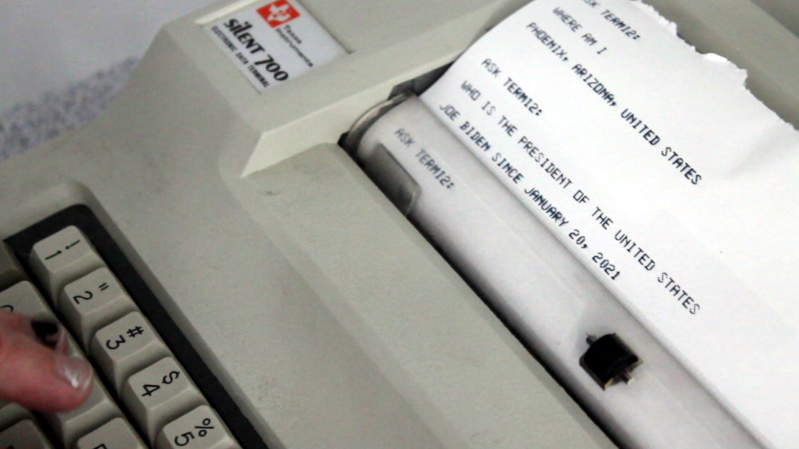What are your plans for the long weekend? If you don’t have time or don’t want to dive into a new project, why not dust off something left unfinished, or do as Hackaday alum [Cameron Coward] did recently and upgrade an old project with a new brain.
In this case, the project in question is a terminal typewriter — a Texas Instruments Silent 700 Terminal, to be exact — into a sort of late ’70’s version of Siri. The terminal typewriter is a special beast that used an acoustic coupler to send and receive both beeps and boops from distant mainframes. Whereas the first iteration of Termi used a Raspberry Pi Zero W to run a script that queries Wolfram Alpha, [Cameron] decided that between the login requirement, the boot time, and the weird formatting required to get it to work, that there had to be a better way.
Turns out that the better way is to use an ESP32 and read the “serial port”, which is a proprietary port with two serial connections — one for the acoustic coupler, and one for regular serial communication. Our favorite thing about this build, no matter the brain, is that there is a permanent record of all the questions and answers. Be sure to check out the video after the break.

















Very cool project.
Still can’t believe these systems printed absolutely everything on non-reusable paper. Probably the only reason they didn’t have to order paper by the truckload back then was the extremely slow speed.
Who says they didn’t? I’m an ex-teletype mechanic (early 80s) and if you had such a beast, you had a room with at least one pallet of paper rolls.
This made me think of Majel Barrett tendition of the Enterprise computer in Star Trek TOS .
Ironically, the producers probably gave the computer a voice because it was both looked more futuristic and was also cheaper than having an actual teletype.
I had & used a Silent 700 to connect to a DTSS in the early 80s. It used thermal paper which was a bit hard to find until FAX machines started to appear. They used thermal paper too.
BTW The tone playing in the video is not from the Silent 700
It actually is coming from the Silent 700 and I have no idea why! It starts sounding that tone around 10 seconds after the “online” light comes on. If anyone knows why this might be happening, I’d love to figure it out.
Printing on thermal paper, that is not “a permanent record”.
The noise is from the acoustic coupler. The connection to the ESP32 box must be enabling the CD (carrier detect) signal when it goes online, which makes the modem in the terminal think that it should be sending out a carrier to the device on the phone handset plugged into the acoustic coupler. Just stuff an old rag into the speaker side of the acoustic coupler to muffle the sound, or experiment with the signaling on the connector to figure out if it’s possible to stop the carrier tone without stopping the terminal from working properly.
That makes sense! I’ll have to play around with it to see if I can get make it stop, but that gives me a place to start so thank you!